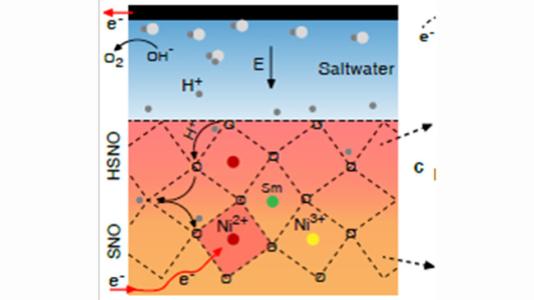
Scientific achievement
A thin film of a samarium nickelate quantum material (SNO) senses changes in electric fields in saltwater while maintaining stability, analogous to the electroreception sensing organ in sharks, which detects the bioelectric fields of prey fish.
Significance and impact
The SNO sensor undergoes a repeatable and reversible phase change mediated by water and driven by an electric field promising a detection range from bioelectric potential of sea species to galvanic potential from ships.
Research details
First principles calculations of SNO-water interactions were performed at the Center for Nanoscale Materials and Argonne Leadership Computing Facility computing clusters, explain the sensing mechanism.
X-ray reflectivity, absorption spectroscopy was performed at the Advanced Photon Source.
Argonne National Laboratory seeks solutions to pressing national problems in science and technology. The nation’s first national laboratory, Argonne conducts leading-edge basic and applied scientific research in virtually every scientific discipline. Argonne researchers work closely with researchers from hundreds of companies, universities, and federal, state and municipal agencies to help them solve their specific problems, advance America’s scientific leadership and prepare the nation for a better future. With employees from more than 60 nations, Argonne is managed by UChicago Argonne, LLC for the U.S. Department of Energy’s Office of Science.
The U.S. Department of Energy’s Office of Science is the single largest supporter of basic research in the physical sciences in the United States and is working to address some of the most pressing challenges of our time. For more information, visit https://energy.gov/science.
